 |
| January 04, 2022 | Volume 18 Issue 01 |
Materials News & Products
Designfax weekly eMagazine
Archives
Partners
Manufacturing Center
Product Spotlight
Modern Applications News
Metalworking Ideas For
Today's Job Shops
Tooling and Production
Strategies for large
metalworking plants
Weird stuff: Moon dust simulant for 3D printing
 Crafted from a lunar regolith simulant, Basalt Moon Dust Filamet™ (not a typo) available from The Virtual Foundry closely mirrors the makeup of lunar regolith found in mare regions of the Moon. It enables users with standard fused filament fabrication (FFF) 3D printers to print with unparalleled realism. Try out your ideas before you go for that big space contract, or help your kid get an A on that special science project.
Crafted from a lunar regolith simulant, Basalt Moon Dust Filamet™ (not a typo) available from The Virtual Foundry closely mirrors the makeup of lunar regolith found in mare regions of the Moon. It enables users with standard fused filament fabrication (FFF) 3D printers to print with unparalleled realism. Try out your ideas before you go for that big space contract, or help your kid get an A on that special science project.
Learn more.
Make nylon 3D-printed prototypes and parts in the office
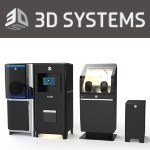 The new SLS 300 from 3D Systems is an affordable, turnkey, closed-loop 3D-printing system designed to operate in a smaller-footprint environment. SLS 300 makes selective laser sintering available to a broader range of customers with a high-reliability, affordable solution to produce end-use parts. Users can produce tough, durable parts from a range of production-grade nylon materials. Amazing fill, finishing, and clean-up systems.
The new SLS 300 from 3D Systems is an affordable, turnkey, closed-loop 3D-printing system designed to operate in a smaller-footprint environment. SLS 300 makes selective laser sintering available to a broader range of customers with a high-reliability, affordable solution to produce end-use parts. Users can produce tough, durable parts from a range of production-grade nylon materials. Amazing fill, finishing, and clean-up systems.
Learn more.
Will it erode? 3D-printing materials comparison from Xometry
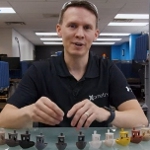 Which 3D-printed plastics are the toughest? In this "Will it ..." video, Greg Paulsen, Xometry's Director of Application Engineering, 3D printed Benchies (3D test models) using different materials (such as polycarbonate, PLA, polypropylene, ULTEM, and Nylon 11 and 12) and processes (such as FDM, SLS, MJF, SLA, LSPc, Polyjet, and DLS) and then ran several abrasion tests on them. Watch to find out which 3D-printed plastic is truly the toughest of them all!
Which 3D-printed plastics are the toughest? In this "Will it ..." video, Greg Paulsen, Xometry's Director of Application Engineering, 3D printed Benchies (3D test models) using different materials (such as polycarbonate, PLA, polypropylene, ULTEM, and Nylon 11 and 12) and processes (such as FDM, SLS, MJF, SLA, LSPc, Polyjet, and DLS) and then ran several abrasion tests on them. Watch to find out which 3D-printed plastic is truly the toughest of them all!
View Part 1.
View Part 2.
Graphene Handbook: Learn all about this wonder material
 Metalgrass LTD has published the 11th edition of its "Graphene Handbook," a comprehensive resource on graphene technology, the industry, and the market for this wonder material made of single layers of atoms of pure carbon. The book includes development history, production methods, current research, an intro to metrology and standardization, and even an investment guide. Under 100 bucks for digital edition. Hard copy available too.
Metalgrass LTD has published the 11th edition of its "Graphene Handbook," a comprehensive resource on graphene technology, the industry, and the market for this wonder material made of single layers of atoms of pure carbon. The book includes development history, production methods, current research, an intro to metrology and standardization, and even an investment guide. Under 100 bucks for digital edition. Hard copy available too.
Learn more.
Who knew? How colorants affect plastic
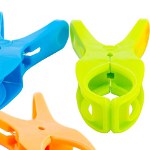 In plastic injection molding, one aspect of polymer characteristics that doesn't always get the consideration it deserves is the addition of colorant. Believe it or not, there is a whole scientific body of knowledge about the ways in which adding color to plastic can affect its behavioral properties. This short article by Denny Scher of ICO Mold takes a high-level look at some of the different, and surprising, ways colorants can affect plastics.
In plastic injection molding, one aspect of polymer characteristics that doesn't always get the consideration it deserves is the addition of colorant. Believe it or not, there is a whole scientific body of knowledge about the ways in which adding color to plastic can affect its behavioral properties. This short article by Denny Scher of ICO Mold takes a high-level look at some of the different, and surprising, ways colorants can affect plastics.
Read the full article.
Retaining magnets from JW Winco: Universal and clever
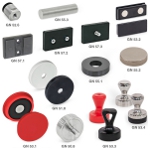 JW Winco has expanded its magnet line to support more applications with new materials, shapes, systems, and even raw magnets. Learn about their latest offerings, including retaining magnets designed for corrosive environments (GN 50.8), encapsulated magnets designed for sensitive or painted surfaces (GN 51.8), handle magnets (GN 53.3), and powerful magnets designed to handle challenging environs (GN 52.6).
JW Winco has expanded its magnet line to support more applications with new materials, shapes, systems, and even raw magnets. Learn about their latest offerings, including retaining magnets designed for corrosive environments (GN 50.8), encapsulated magnets designed for sensitive or painted surfaces (GN 51.8), handle magnets (GN 53.3), and powerful magnets designed to handle challenging environs (GN 52.6).
Learn more.
3D print tool steel with the ease of a plastic
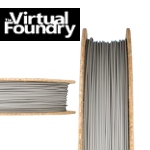 The Virtual Foundry, a pioneer in advanced 3D-printing materials, is excited to announce the launch of their latest innovation: M300 Tool Steel Filamet™ (not a typo). This material answers the demand for FFF 3D-printable Tool Steel, delivering unparalleled strength and versatility. What sets this material apart is its seamless compatibility with various 3D printers, including Creality, Bambu Lab, Ultimaker, and more. The filament prints effortlessly, resembling the ease of working with PLA (plastic).
The Virtual Foundry, a pioneer in advanced 3D-printing materials, is excited to announce the launch of their latest innovation: M300 Tool Steel Filamet™ (not a typo). This material answers the demand for FFF 3D-printable Tool Steel, delivering unparalleled strength and versatility. What sets this material apart is its seamless compatibility with various 3D printers, including Creality, Bambu Lab, Ultimaker, and more. The filament prints effortlessly, resembling the ease of working with PLA (plastic).
Learn more.
Great Resources: Sheet metal design guide
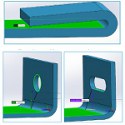 If you're looking for a basic guide to sheet metal design, this one from Xometry will serve your needs well. Follow the design requirements and tolerances in this guide to ensure parts fall closer to design intent. This is the type of information you'll sock away and then refer to again and again.
If you're looking for a basic guide to sheet metal design, this one from Xometry will serve your needs well. Follow the design requirements and tolerances in this guide to ensure parts fall closer to design intent. This is the type of information you'll sock away and then refer to again and again.
Read the full article.
Particle foam perfectly distributed thanks to simulation with Ultrasim
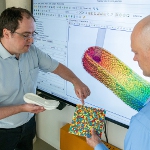 BASF's Ultrasim simulation solution now includes Infinergy, an expanded thermoplastic polyurethane (E-TPU) that is used in a wide range of applications to make components with particle foam -- from bicycle tires to the soles on shoes. Identify and solve problems related to pneumatic filling when distributing particle foams in molds, even taking gravity and mold closing into consideration. Avoid those pesky air pockets.
BASF's Ultrasim simulation solution now includes Infinergy, an expanded thermoplastic polyurethane (E-TPU) that is used in a wide range of applications to make components with particle foam -- from bicycle tires to the soles on shoes. Identify and solve problems related to pneumatic filling when distributing particle foams in molds, even taking gravity and mold closing into consideration. Avoid those pesky air pockets.
Learn more.
Premium polymer DLP printer is half the price of its predecessor
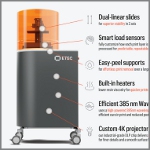 Desktop Metal has just launched the ETEC Pro XL -- a premium polymer digital light processing (DLP) printer that enters the market at less than half the price as its predecessor. DLP is regarded by many as a superior polymer 3D-printing technology for speed, surface finish, and accuracy. Ideal for automotive and machine parts, aerospace components, housings, connectors, jigs and fixtures, short-run molds, and more.
Desktop Metal has just launched the ETEC Pro XL -- a premium polymer digital light processing (DLP) printer that enters the market at less than half the price as its predecessor. DLP is regarded by many as a superior polymer 3D-printing technology for speed, surface finish, and accuracy. Ideal for automotive and machine parts, aerospace components, housings, connectors, jigs and fixtures, short-run molds, and more.
Read the full article.
CNC machining case study: One-of-a-kind computer chassis
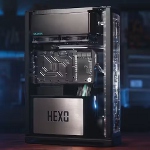 Learn how Josh Sniffen, the YouTuber behind the popular PC-building channel "Not From Concentrate," trusted Xometry to provide a wide range of manufacturing options, personalized Design for Manufacturing (DFM) feedback, and order management support for his latest creation: the HEXO ATX computer chassis. All in all, Sniffen procured parts using Xometry's CNC machining service, selective laser sintering 3D-printing service, and sheet metal cutting and fabrication services. A neat insider look at the process.
Learn how Josh Sniffen, the YouTuber behind the popular PC-building channel "Not From Concentrate," trusted Xometry to provide a wide range of manufacturing options, personalized Design for Manufacturing (DFM) feedback, and order management support for his latest creation: the HEXO ATX computer chassis. All in all, Sniffen procured parts using Xometry's CNC machining service, selective laser sintering 3D-printing service, and sheet metal cutting and fabrication services. A neat insider look at the process.
Read this Xometry case study.
Which parts should be 3D printed? AI combs through CAD files to find out
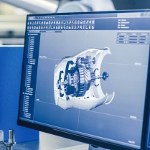 One of the biggest challenges in transitioning to additive manufacturing (AM) is the ability to identify which parts are best suited for the process quickly and easily. Learn how Danfoss, Stanley Engineered Fastening, and even the U.S. military have utilized advanced additive manufacturing software to automate the process, reducing material waste and energy costs, improving part reliability, decreasing lead times, as well as now having the ability to identify part consolidation opportunities through intelligent AM decision-making.
One of the biggest challenges in transitioning to additive manufacturing (AM) is the ability to identify which parts are best suited for the process quickly and easily. Learn how Danfoss, Stanley Engineered Fastening, and even the U.S. military have utilized advanced additive manufacturing software to automate the process, reducing material waste and energy costs, improving part reliability, decreasing lead times, as well as now having the ability to identify part consolidation opportunities through intelligent AM decision-making.
Read the full article.
9 key design tips for injection molding
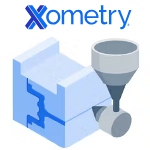 Keep costs down and quality up all while optimizing your injection molded designs with these helpful tips from Xometry. Learn how to build better injection molded parts and products -- using draft angles, ribs and gussets, radii, fillets, and more -- and set expectations for the injection molding process. Good info here.
Keep costs down and quality up all while optimizing your injection molded designs with these helpful tips from Xometry. Learn how to build better injection molded parts and products -- using draft angles, ribs and gussets, radii, fillets, and more -- and set expectations for the injection molding process. Good info here.
View the video.
Metal additive manufacturing: Rocket turbopump design
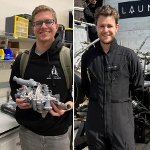 Mixing undergraduate curiosity and real-world engagement, two students from Colorado University Boulder Aerospace Engineering Sciences program, Zachary Lesan and Patrick Watson, started an independent effort on turbopump design and manufacture that is a lesson in determination and industry collaboration. With lots of supplies and advice from industry heavy hitters including Velo3D, CFturbo, SpaceX, and many more, their project has reinforced significant points being made about next-generation rocketry.
Mixing undergraduate curiosity and real-world engagement, two students from Colorado University Boulder Aerospace Engineering Sciences program, Zachary Lesan and Patrick Watson, started an independent effort on turbopump design and manufacture that is a lesson in determination and industry collaboration. With lots of supplies and advice from industry heavy hitters including Velo3D, CFturbo, SpaceX, and many more, their project has reinforced significant points being made about next-generation rocketry.
Read the full article.
Transparent ceramics for extreme optics
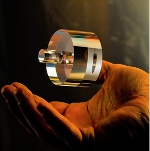 Sapphire is an inherently transparent ceramic material that is resistant to extremes of temperature and environment. Sapphire can be processed to unique and precise shape/form by diamond grinding and polishing to allow full transparency. INSACO is a global leader in this capability -- and working with ultra-hard materials in general.
Sapphire is an inherently transparent ceramic material that is resistant to extremes of temperature and environment. Sapphire can be processed to unique and precise shape/form by diamond grinding and polishing to allow full transparency. INSACO is a global leader in this capability -- and working with ultra-hard materials in general.
Learn more.
Customizing Harleys requires top-quality CNC machines
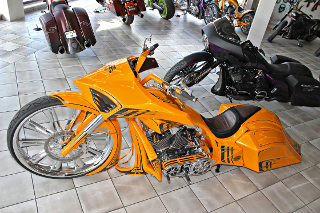
Big-front-wheel Harleys are a trendy thing, but you can't have one built just anywhere. This one was built by Kodlin Motorcycle. [Photo Credit: Siemens AG/P. Klingauf]
Kodlin Motorcycle in Germany customizes motorcycles based upon bikes from the legendary American brand Harley-Davidson. Sophisticated technology and an easy-to-use control system are essential for this way-out work, which is why the company chose the Sinumerik 828D CNC from Siemens.
The Kodlin family has motorcycles in its blood. Master blacksmith Fred Kodlin gave his son Len his first motocross bike for his fifth birthday. There was never really any question about what Len would do when he grew up. Today, the father-and-son team runs the Fred Kodlin Motorcycle workshop, founded by Fred Kodlin back in 1984, in the small town of Borken in the German state of Hessen.
The company is highly specialized; together, father, son, and 10 employees customize Harley-Davidson motorcycles. Up to 50 motorcycles leave their shop floor each year, to the great excitement of their new owners. Many customers simply want to have their series-produced bikes adjusted to suit them better, or to look more personalized. Other customers come to the company looking for bigger modifications, such as the installation of a huge front wheel, which has a very striking effect and is popular among some Harley-Davidson fans.
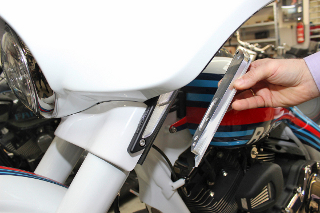
Milled decorative aluminum elements give Kodlin bikes an individualized touch. [Photo Credit: Siemens AG/P. Klingauf]
The most passionate bikers, however, want their bikes to be completely personalized. "These unique bikes cannot be beaten in terms of exclusivity. When it comes to design and technology, we make the virtually impossible possible," says junior manager Len Kodlin. In some of these models, the only thing that's left is the engine, with its unmistakable Harley-Davidson sound; the rest of the bike is made up of components that have been developed and produced entirely by Kodlin. Customers' budgets are the primary thing limiting their imagination. Enthusiasts pay up to $130,000 for these unique rides. There also are, of course, technical approval restrictions for individual countries.
Avoiding imitations
When fulfilling a customer's dream of owning a personalized motorcycle, the customizers at Kodlin Motorcycle not only adapt parts, they also manufacture many individual parts themselves. Various styles of footboards, footpegs, turn-signal trim, air filters, engine covers, hand grips, and mirror brackets are manufactured individually or in very small series.
Outsourcing production could be cheaper in many cases, but for Kodlin, this is not an option. Len Kodlin explains the reasoning behind the decision. "Unique pieces are the basis of our whole company," he says. "The risk of copies appearing is simply too great. Our customers pay for something unique, and that's what we give them. This is why we do everything ourselves, from sheet-metal work and welding to milling, turning, painting, and assembly."
Kodlin has an extremely wide range of manufacturing capabilities to prevent imitations and rival products, thus safeguarding its competitive edge. The company invests heavily in production expertise and machinery. Kodlin even has a world manufacturer identifier. This official designation signals that Kodlin is officially a manufacturer that can build and approve motorcycles.
An integrated process from the design to the machine
Anyone who wants to survive the competition as a small, independent customizer needs top-quality CNC machines. That's why the core of Kodlin's production process is a PreMill VL 1000 CNC machining center from MMD Werkzeugmaschinen with a Sinumerik 828D CNC system. Len Kodlin, a trained precision mechanic himself, says that what matters to him and his father is that "MMD was extremely cooperative and, with the PreMill VL 1000, gave us a machine that meets our needs perfectly. The price/performance ratio was good, and with the Sinumerik 828D control -- including the intuitive Sinumerik Operate graphical user interface -- our core requirement, namely ease-of-operation, was met to our utmost satisfaction."
The demands on the machine tool and control system are high and diverse. Many simple parts are programmed directly on the machine. For this type of application, it is important for the shop-floor programming to be as simple as it is reliable and efficient. Jan Rosenkranz, a mechanic on the Kodlin team, says, "The ShopMill menu-based navigation makes everything really quick and easy." He also appreciates the convenient set-up functions.
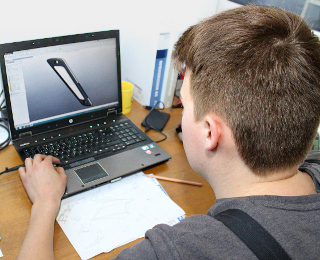
Len Kodlin creates the CNC programs for many self-designed components at an external CAD/CAM workstation. Shown is a decorative part made of aluminum. [Photo Credit: Siemens AG/P. Klingauf]
The production of custom parts, which often involves extremely complex contouring, is entirely different. The junior manager creates the programs for these parts separately at an external CAD/CAM workstation and then transfers them to the machine using a USB stick. This means the machine can remain in operation while the junior manager can design parts for his spectacular creations, far away from production noise, in peace and quiet. Once the blank is in place, the entire machining process itself goes very quickly. With the help of various Sinumerik CNC cycles, the workpiece and the tool are set up quickly, and machining on the PreMill VL 1000 can begin.
Len Kodlin highights the clearly organized folder structure in Sinumerik Operate, which is designed in a similar way to that found on a traditional PC. Meaningful names -- such as "Handlebar1-Customer3" -- with up to 28 characters can be assigned to the programs. This improves the ability to maintain an overview, and products that have already been made can be clearly identified and accessed again at a later date.
The entire production spectrum covered
In terms of production technology, the PreMill VL 1000 offers everything needed for bike parts. The machine gets extra points for its framework construction, which makes it very stable and easily accessible.
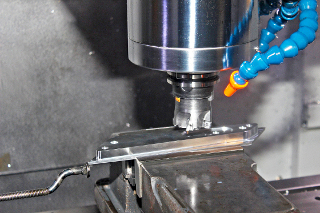
The part is machined using the PreMill VL 1000 CNC machining center from MMD Werkzeugmaschinen, with Sinumerik 828D CNC. A 10-kW milling spindle enables the quick and precise machining of components. [Photo Credit: Siemens AG/P. Klingauf]
The majority of the components are less than 500 mm long. However, there are exceptions, such as long fork tubes. With travel paths of X = 1,020 mm, Y = 510 mm, and Z = 560 mm, plus a 1,200-mm x 500-mm clamping table, the machine covers the spectrum comprehensively. The 10-kW milling spindle provides the power needed to machine the parts quickly and precisely, which are usually made of aluminum or steel. The changer can be equipped with up to 30 tools, and the linear guides on all three axes ensure utmost precision. According to Jens Bubenheim, a sales consultant at MMD, the PreMill VL 1000 achieves a repeat accuracy of +/- 3 µm and a positioning accuracy of +/- 5 µm, which means that the desired quality is always guaranteed.
A special feature on the Sinumerik 828D CNC scores additional points for high quality, namely the Sinumerik MDynamics technology package with integrated Advanced Surface motion control. The program sequence can be set or adjusted at any time, ensuring that the machine generates an optimal ratio of speed, accuracy, and surface quality.
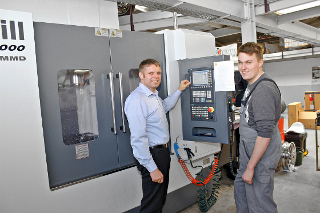
Len Kodlin (on the right), co-owner of Kodlin Motorcycle, says, "Our core requirement, namely ease of operation using the Sinumerik 828D CNC and the intuitive Sinumerik Operate graphical user interface, was met to our utmost satisfaction." [Photo Credit: Siemens AG/P. Klingauf]
Take the turn signal trim, for example. In this case, production accuracy is of less significance. Corresponding settings in MDynamics and the activated Advanced Surface therefore ensure that the machine works with a focus on both surface quality and speed of production.
Luckily for us, Kodlin also has a shop in the USA. You can see their offerings at kodlinusa.com.
If you want more info on any Siemens systems, a good first contact is John Meyer, Marketing Communications Manager, Siemens Industry, Inc.; 390 Kent Avenue; Elk Grove Village, IL 60007. Give John a call at 847-640-1595 or email him at john.meyer@siemens.com.
Learn more at usa.siemens.com/cnc.
Sources: Siemens, Kodlin Motorcycle
Published July 2021
Rate this article
View our terms of use and privacy policy
